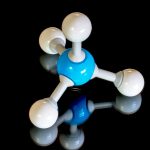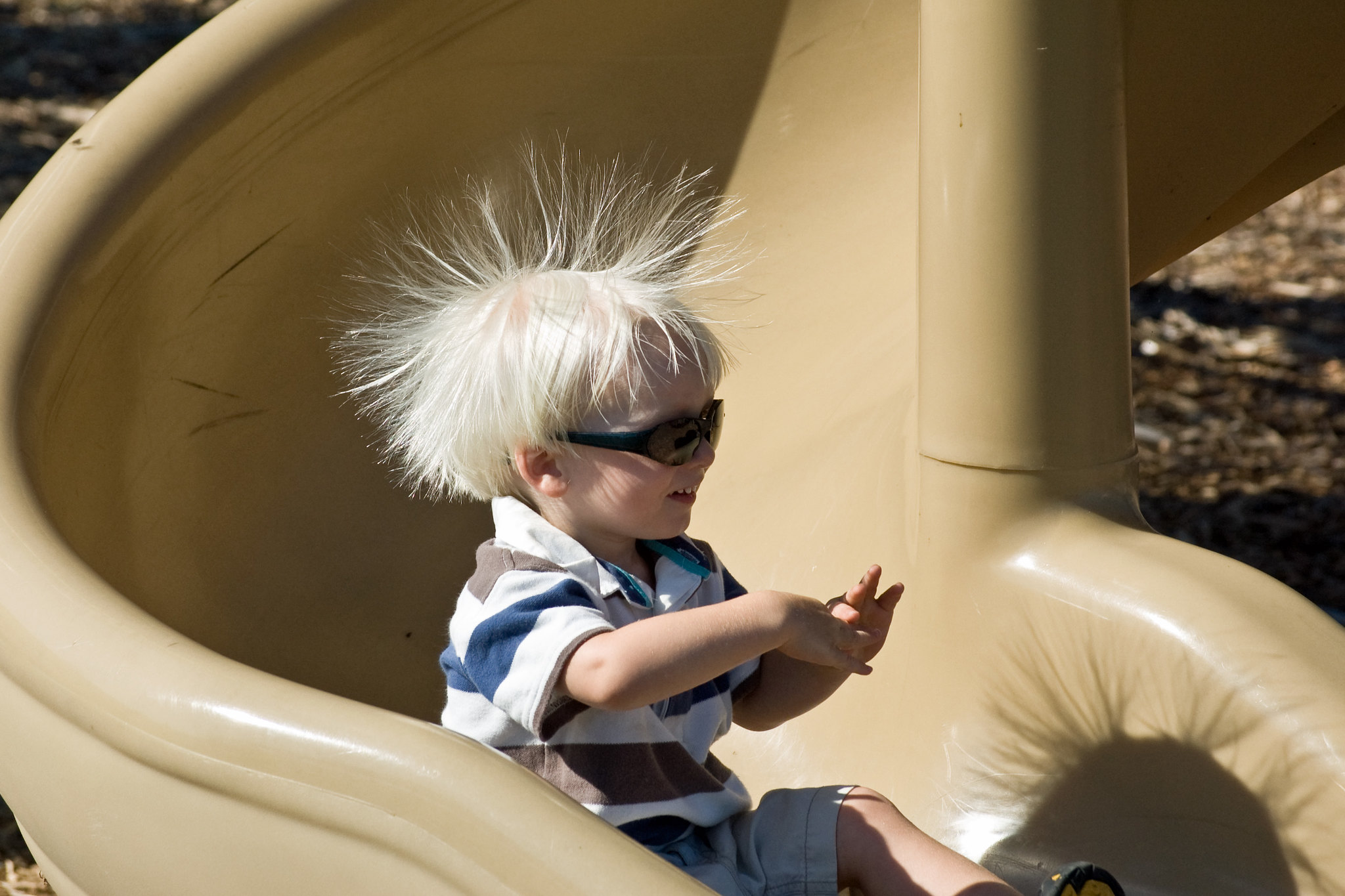Interestingly the ion/anion symbol on an ion air cooler is a pine tree. A reference to fact that negative ions exist in abundance in the forest.
Negative ions are prevalent in certain natural environments, including:
Forests: The dense vegetation, especially in pine forests, contributes to the high concentration of negative ions. The process of photosynthesis, along with the movement of water from rainfall and streams, facilitates the generation of ions.
Beaches: The constant crashing of waves and the presence of salt water facilitate the production of negative ions, making beach environments particularly rich in these particles.
After Thunderstorms: Lightning is a powerful natural phenomenon that generates a significant amount of negative ions, leading to the fresh and clean feeling in the air following a storm.
Table of Contents
What is an Ionizing Air Conditioner?
An ionizing air conditioner, also known as an ionizer or ionic air purifier, is a type of air conditioning unit that incorporates technology to purify the air as it cools.
The use of ionization in air conditioners serves both purposes:
Cleaning the air and preventing the growth of mold and bacteria on the air conditioner itself.
Cleaning the Air: Ionization in air conditioners helps to purify the air by generating negative ions, which attach to airborne particles such as dust, pollen, allergens, and some microorganisms.
These particles then become too heavy to remain airborne and are either captured by the air conditioner’s filters or fall to surfaces where they can be cleaned away. This process helps reduce the concentration of harmful pollutants in the indoor air, contributing to a healthier environment.
Preventing Mold and Bacteria Growth: The ionization process also helps prevent the growth of mold and bacteria within the air conditioner unit itself. The ions can neutralize bacteria and mold spores, reducing their ability to grow on the air conditioner’s coils and other internal components.
This not only contributes to better air quality but also helps maintain the efficiency and lifespan of the air conditioner by preventing the buildup of biological contaminants that can hinder its performance.
What is a Plasma Air Conditioner?
While ionizing air conditioners are effective in improving air quality and maintaining unit cleanliness, plasma air conditioners represent a more advanced form of ionizing technology.
A plasma air conditioner utilizes a high-voltage electrical discharge to create plasma, a highly ionized gas that contains not only ions but also free electrons and neutral particles. As air passes through the plasma field generated within the unit, the plasma actively neutralizes a wide array of airborne contaminants, including viruses, bacteria, VOCs, and allergens, without the risk of producing harmful ozone.
This makes plasma air conditioners exceptionally efficient at purifying indoor air, offering a comprehensive solution to both particulate and microbial pollutants. The integration of plasma technology in air conditioning systems is seen as a significant advancement, providing superior air purification while still fulfilling the core function of cooling indoor environments.
Exploring Plasma Technology in Air Conditioning: A Detailed Overview
| Feature | Description | Benefits | Applications | Considerations |
|---|---|---|---|---|
| Technology | Utilizes electrical energy to create plasma, comprising ions, electrons, and neutral particles. | Offers broad-spectrum air purification. | Suitable for split ACs, central HVAC, and commercial systems. | Opt for models designed to minimize ozone production. |
| Mechanism | The generated plasma interacts with airborne contaminants, neutralizing particulate matter, VOCs, and microbes. | Enhances energy efficiency by using existing airflow. | Ideal for residential spaces, offices, and healthcare facilities. | Regular maintenance is essential for optimal performance. |
| Target Pollutants | Effective against a wide range of pollutants, including bacteria, viruses, dust, and odors. | Safe for indoor use with minimal harmful byproducts. | Used to improve overall indoor air quality. | Ensure compatibility with existing HVAC systems. |
| Safety | Engineered to be safe for indoor environments, with controlled ozone levels. | Improves air quality without significant health risks. | Recommended for areas with high air quality requirements. | Verify safety with certifications and manufacturer standards. |
 Here are examples of Well-known Air Conditioner brands equipped with ionizing and plasma technologies:
Here are examples of Well-known Air Conditioner brands equipped with ionizing and plasma technologies:
Ionizing Air Conditioners:
- Portable Air Conditioner: The LG LP1419IVSM portable unit is noted for its “Dual Inverter” technology and features that reduce bacteria and odors, akin to ionizing capabilities.
- Window Air Conditioner: Frigidaire Gallery FGRC0844U1 is a smart window air conditioner with Wi-Fi and an ionizer to capture dust and enhance efficiency.
- Split Air Conditioner: Panasonic XE12SKUA-1 from the Exterios XE series includes an advanced “nanoe-G” air purifying system that uses nano-technology to eliminate airborne particles.
- Central Air Conditioning System: Systems like Trane CleanEffects™ Air Cleaner can be integrated into HVAC systems, providing high-efficiency air cleaning with ionizing technology.
- Smart Air Conditioner: LG LW1817IVSM is a smart window unit with dual inverter technology, known for its ability to tackle bacteria and odors, suggesting ionizing functionality.
Plasma Air Conditioners:
- Split Air Conditioners: Brands like Sharp offer split air conditioners with “Plasmacluster” technology, which employs plasma to combat airborne contaminants such as bacteria and viruses.
- Portable Air Conditioners: Certain portable models, like those from Plasma Air, include plasma technology for air purification, offering a portable solution for improving air quality.
- Central HVAC Systems: Reme Halo by RGF and Phenomenal Aire’s Cold Plasma Generators (CPG) are integrated into central HVAC systems, providing comprehensive air purification throughout the home or building.
- Commercial Air Conditioning Systems: Plasma Air offers solutions for larger commercial and industrial HVAC systems to ensure high air quality standards in various spaces, including offices and hospitals.
These air conditioning brands showcase the integration of ionizing and plasma technologies to enhance air purification and improve indoor air quality in different types of air conditioners, including portable, window, split, central, and commercial systems.
In-Duct Ionizer and Plasma Solutions for HVAC Systems
In-duct ionizer and plasma solutions are innovative air purification technologies designed to be integrated directly into the ductwork of HVAC (Heating, Ventilation, and Air Conditioning) systems. These solutions offer a seamless way to improve indoor air quality throughout an entire building or home. Here’s a closer look at how they work and their benefits:
In-Duct Ionizers:
- How They Work: In-duct ionizers release a high concentration of positive and negative ions into the circulating air within the HVAC ducts. These ions attach to airborne particles like dust, pollen, and microbes, causing them to clump together and become too heavy to stay airborne, thus removing them from the air you breathe.
- Benefits: This system is particularly effective at reducing airborne allergens and pathogens, making it an excellent choice for environments where health and hygiene are paramount. Additionally, it operates silently and is hidden from view, maintaining the aesthetic appeal of the interior space.
In-Duct Plasma Solutions:
- How They Work: Plasma air purifiers generate a plasma field within the HVAC ducts. Plasma, being a highly ionized gas, contains a mixture of ions, electrons, and neutral particles. When air passes through this plasma field, the reactive species within the plasma neutralize a broad range of contaminants, including volatile organic compounds (VOCs), odors, bacteria, and viruses.
- Benefits: Plasma solutions are known for their broad-spectrum effectiveness, capable of addressing both particulate and gaseous pollutants. They can significantly improve the air quality in a space without introducing harmful byproducts like ozone, making them a safe choice for indoor environments.
Both in-duct ionizers and plasma solutions are low maintenance and energy-efficient, as they utilize the existing airflow within the HVAC system to purify the air, eliminating the need for additional fans or power sources. They are also scalable, making them suitable for small residential systems as well as large commercial buildings.
Incorporating these technologies into your HVAC system can dramatically enhance indoor air quality, creating a healthier and more comfortable environment for occupants. Whether you opt for an ionizer or plasma solution depends on your specific air quality needs and the types of contaminants you’re looking to target.
Deciding Between Ionizer and Plasma Air Conditioning Solutions
| Feature | Ionizers in Air Conditioners | Plasma in Air Conditioners |
|---|---|---|
| Pros |
|
|
| Cons |
|
|
When it comes to enhancing indoor air quality through your air conditioning system, both ionizer and plasma technologies offer compelling benefits. However, choosing the right solution depends on your specific needs, preferences, and the nature of your indoor environment. Here’s a comparison to help you decide:
Ionizer Air Conditioning Solutions:
- How They Work: Ionizers emit charged particles (ions) into the air, which attach to and neutralize airborne pollutants, making them heavier so they settle out of the air or are captured by filters.
- Key Benefits: Effective at reducing particulate pollutants like dust, pollen, and pet dander. Often quieter and require less maintenance.
- Best For: Those with allergies or respiratory issues who need relief from particulate allergens. Ideal for residential settings where particulate pollution is the primary concern.
- Considerations: May produce low levels of ozone as a byproduct. Not as effective against gases or VOCs.
Plasma Air Conditioning Solutions:
- How They Work: Plasma technology uses a high-voltage electrical discharge to create a plasma field that neutralizes a broad range of airborne contaminants, including VOCs, bacteria, and viruses.
- Key Benefits: Broad-spectrum air purification capabilities. Can handle both particulate matter and gaseous pollutants. Generally safe with minimal ozone production.
- Best For: Environments requiring comprehensive air purification, including commercial spaces, healthcare facilities, and homes in areas with high pollution levels.
- Considerations: May come with a higher price tag. Requires proper installation and occasional maintenance to ensure optimal performance.
 Making Your Decision:
Making Your Decision:
- Assess Your Needs: Evaluate the primary air quality concerns in your space. Is it particulate matter, gaseous pollutants, or a combination of both?
- Consider Your Space: The size and function of your space can influence your choice. Plasma solutions might be more suitable for larger or more polluted environments.
- Budget and Maintenance: Consider your budget not just for the initial purchase but also for ongoing maintenance. Ionizers might be more cost-effective and require less maintenance.
- Safety Concerns: If ozone production is a concern, research models carefully to choose solutions that minimize or eliminate ozone output.
Ultimately, both ionizer and plasma air conditioning solutions can significantly improve indoor air quality, but the right choice depends on your specific air quality challenges, space requirements, and personal preferences.
But which is Creates Less Ozone?
Plasma air purification technology typically poses less risk of ozone production compared to some ionizer technologies. This is because plasma air purifiers are designed to target and neutralize contaminants without necessarily producing ozone as a byproduct. Plasma technology uses electrical discharges to create a plasma field that can effectively break down pollutants, bacteria, and viruses in the air without generating significant ozone levels.
Faq
Do you have to leave the fan running on your HVAC to have an in-duct ionizer or plasma air purifier going?
Yes, for optimal performance, it’s recommended to leave the fan running on your HVAC system to ensure proper circulation of the purified air throughout your space.
Where do you install an in-duct air purifier or ionizer in an HVAC?
In-duct air purifiers or ionizers are typically installed within the ductwork of your HVAC system, preferably near the air handler. This allows them to treat the air as it passes through the ducts before being distributed into your living space.
Does having an in-duct air purifier in the HVAC create less ozone or make it less noticeable?
In-duct air purifiers, especially plasma-based ones, typically produce minimal ozone compared to some standalone ionizers. They are designed to neutralize contaminants without significantly contributing to ozone levels, making them safe for indoor use. Additionally, proper installation and maintenance can help minimize any ozone production.
What is an ionizing air conditioner?
An ionizing air conditioner, also known as an ionizer or ionic air purifier, is a type of air conditioning unit that incorporates technology to purify the air as it cools by emitting charged particles, or ions, into the air.
How does an ionizing air conditioner work?
Ionizing air conditioners work by generating negative ions, which attach to airborne particles such as dust, pollen, allergens, and some microorganisms. These particles then become too heavy to remain airborne and are either captured by the air conditioner’s filters or fall to surfaces where they can be cleaned away.
What are the benefits of using an ionizing air conditioner?
Ionizing air conditioners help purify indoor air by reducing the concentration of airborne pollutants, contributing to a healthier environment. Additionally, they can help prevent the growth of mold and bacteria within the air conditioner unit itself, improving overall air quality.
What is a plasma air conditioner?
A plasma air conditioner utilizes plasma technology, which involves creating a highly ionized gas containing ions, electrons, and neutral particles, to purify the air. Plasma air conditioners are known for their comprehensive air purification capabilities, effectively neutralizing a wide array of airborne contaminants.
How does a plasma air conditioner differ from an ionizing air conditioner?
While both ionizing and plasma air conditioners aim to purify indoor air, plasma air conditioners use a more advanced form of ionizing technology, generating plasma to actively neutralize contaminants such as viruses, bacteria, VOCs, and allergens.
Do ionizing or plasma air conditioners produce ozone?
Plasma air conditioners typically produce minimal ozone compared to some ionizing air conditioners. However, it’s essential to choose models designed to minimize ozone production and ensure safe indoor air quality.
Where can ionizing and plasma air conditioners be installed?
Ionizing and plasma air conditioners are available in various types, including portable, window, split, central, and commercial systems, catering to different indoor environments and air quality needs.
Are ionizing and plasma air conditioners safe for residential use?
When installed and operated according to manufacturer guidelines, ionizing and plasma air conditioners are safe for residential use. They are designed to improve indoor air quality without posing significant health risks to occupants.
Do ionizing and plasma air conditioners require regular maintenance?
Yes, like any other air conditioning unit, ionizing and plasma air conditioners require regular maintenance to ensure optimal performance. This may include cleaning the unit, replacing filters or components as needed, and periodic inspections by qualified technicians.
Can ionizing and plasma air conditioners help with odors in the home?
Yes, ionizing and plasma air conditioners are effective at neutralizing odors by targeting the particles and microbes that cause them. Thiscan help freshen the air in your home and create a more pleasant indoor environment.
Are ionizing air conditioners safe for indoor plants and pets?
Ionizing air conditioners are generally safe for indoor plants and pets when operated within recommended guidelines. However, some sensitive plants may be affected by the increased concentration of negative ions, while certain pets, particularly birds, may be sensitive to ozone. It’s advisable to monitor plant and pet reactions and consult with a veterinarian or horticulturist if concerns arise.
Do ionizing air conditioners produce harmful levels of ozone?
While ionizing air conditioners may produce ozone as a byproduct of ionization, reputable models are designed to minimize ozone production and maintain safe indoor air quality levels. It’s essential to choose ionizing air conditioners certified by regulatory bodies and follow manufacturer recommendations for safe operation. Regular maintenance and proper ventilation can also help mitigate ozone levels.
Air Ionizer
What Does Ozone Smell Like?


 Making Your Decision:
Making Your Decision:





